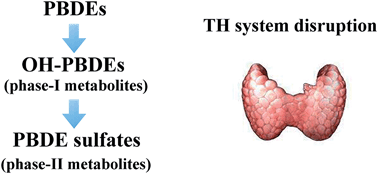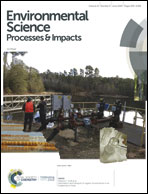Binding and activity of polybrominated diphenyl ether sulfates to thyroid hormone transport proteins and nuclear receptors†
Abstract
Polybrominated diphenyl ethers (PBDEs) can be metabolized to hydroxylated PBDEs (OH-PBDEs), which play important roles in their disruption effects on the thyroid hormone (TH) system. Recently, multiple in vitro studies suggested that OH-PBDEs might be further metabolically transformed to PBDE sulfates. However, information about the bioactivity of PBDE sulfate metabolites is limited. In the present study, we explored the possible disruption effects of PBDE sulfates to the TH system by studying their binding and activity towards TH transport proteins and nuclear receptors. We found PBDE sulfates could bind to two major TH transport proteins (thyroxine-binding globulin and transthyretin). Besides, PBDE sulfates could also bind to two subtypes of TH nuclear receptors (TRα and TRβ) and showed agonistic activity towards the subsequent signaling pathway. Moreover, the PBDE sulfates showed higher binding potency to TH transport proteins and TRs compared with their corresponding OH-PBDE precursors. Molecular docking results showed that replacement of hydroxyl groups with sulfate groups might lead to more hydrogen bond interactions with these proteins. Overall, our study suggested that PBDE sulfates might disturb the TH system by binding to TH transport proteins or TRs. Our finding indicated a possible mechanism for the TH system disruption effects of PBDEs through their sulfate metabolites.



 Please wait while we load your content...
Please wait while we load your content...